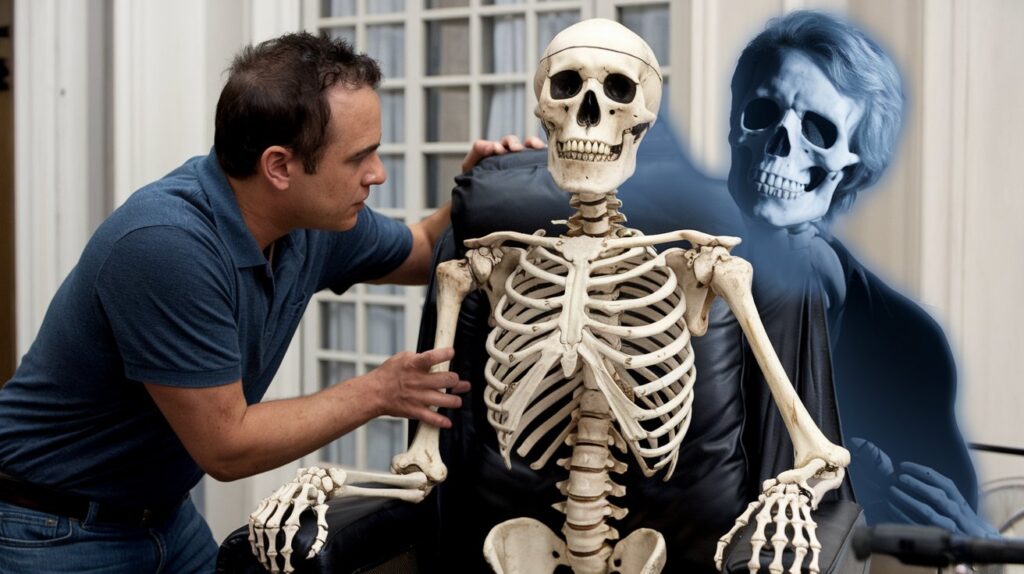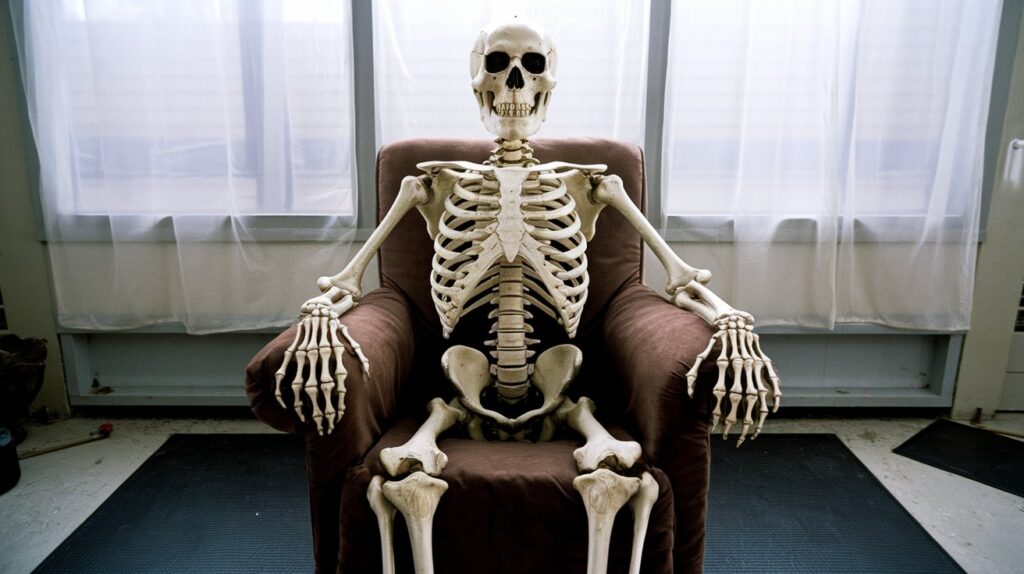The 1982 Movie Poltergeist Used Real Skeletons as – tymoff: A Dark Behind-the-Scenes Truth
November 10, 2024Poltergeist (1982) is often remembered as a horror classic, but the truth behind some of its scenes is just as chilling as the supernatural elements of the film. One of the most shocking facts surrounding this iconic movie is the claim that real human skeletons were used during filming. This revelation has sparked debates and intrigued both horror fans and film buffs alike. In this article, we dive deep into the mystery of whether Poltergeist really used real skeletons, exploring the behind-the-scenes story and the controversies that followed.
The Skeleton Scene That Shocked Audiences
One of the most memorable and unsettling scenes in Poltergeist involves the creepy burial grounds, where a family’s home sits atop a cemetery. As the supernatural forces in the house begin to stir, the family is confronted with a terrifying moment when human skeletons rise from the ground, emerging from the pool in a gruesome scene.
The idea of real skeletons being used in this film isn’t just a rumor — it’s a fact that has been confirmed by several crew members and insiders. The skeletons seen in the scene were, indeed, real. This decision has led to some eyebrows being raised, especially given that the film was produced under the guise of a major Hollywood studio and was rated PG.
The Reason Behind Using Real Skeletons
The filmmakers didn’t use real skeletons for shock value alone. At the time, artificial skeletons were far more expensive and less realistic compared to human remains, which could be obtained at a much lower cost. In the early 1980s, real skeletons were still used in film and television productions, with the reasoning that they were more lifelike and suitable for the gritty, unnerving effect needed for the scene. The production team for Poltergeist apparently found a cheaper, more authentic alternative by acquiring real skeletons from a medical supply company.
The decision was not without its risks, but it was made in the interest of creating a more convincing horror experience. However, using real skeletons on a major movie set did not go unnoticed. After the film’s release, many questioned the ethics of using actual human remains for entertainment purposes.

The Aftermath: What Did the Cast and Crew Know?
While it’s clear that the skeletons were used during filming, the cast and crew’s awareness of the situation varies. Some reports suggest that actress JoBeth Williams, who portrayed Diane Freeling, had no idea that real skeletons were being used in the pool scene until after filming. Other members of the cast were apparently also kept in the dark about this decision, leading to mixed reactions when the truth finally came out.
In a 1982 interview, Williams expressed her shock and discomfort upon learning the truth, stating that she felt “betrayed” by the filmmakers. At the time, the use of real skeletons was still a controversial practice, and many believed that the ethical implications of using human remains in a film were serious enough to warrant public scrutiny.
The Ethical Debate: Was It Right to Use Real Skeletons?
The revelation that real human skeletons were used in Poltergeist has raised questions about the ethics of using human remains in film. While some argue that the skeletons were obtained legally and ethically, others feel that it crosses a line. At the core of the debate is the respect for human dignity — especially when it comes to how remains are treated posthumously.
There are those who believe that the filmmakers acted irresponsibly by using real human remains in a highly commercialized horror film. The fact that it was a PG-rated movie only fueled the fire, as many felt that it was inappropriate for a mainstream film aimed at general audiences to use real skeletons, regardless of the artistic or practical reasons behind the decision.
On the other hand, proponents of the decision argue that the use of real skeletons was no different from other practices in filmmaking that push the boundaries of realism. In the context of the time, it wasn’t considered as taboo as it would be today, and many filmmakers saw it as a legitimate means of creating a more visceral cinematic experience.
Why Did Poltergeist Get Away with It?
Given the controversy surrounding the use of real skeletons, it’s worth wondering why Poltergeist managed to avoid significant backlash at the time of its release. The film’s massive success and its reputation as a must-see horror movie certainly helped to divert attention away from the ethical questions. Additionally, the use of real skeletons wasn’t as widely publicized when the movie first came out, and many viewers were unaware of the details until years later.
Moreover, the atmosphere of 1980s Hollywood — with its sometimes reckless attitude towards shock value in films — may have contributed to the decision to use real skeletons. The era’s horror films, such as The Exorcist and The Texas Chainsaw Massacre, often pushed the limits of what was acceptable, with filmmakers frequently resorting to disturbing visuals and controversial techniques to unsettle audiences.

The Legacy of the Real Skeletons
Today, Poltergeist is remembered not only for its terrifying ghost story but also for the shocking revelation about the real skeletons used in its making. The controversy surrounding this fact has lingered for decades, with some viewing it as a bold move for the film’s realism, while others consider it an unethical choice. Regardless of one’s stance on the matter, the use of real skeletons remains one of the most eerie and unforgettable aspects of Poltergeist.
Also Read: Futekmei.com: An Eco-Friendly Choice for Quality Products
Conclusion: A Chilling Chapter in Movie History
The use of real skeletons in Poltergeist is a dark and often unsettling piece of cinematic history. The controversy surrounding the film’s production reminds us that sometimes, the behind-the-scenes stories can be just as frightening as the films themselves. Whether or not it was the right choice, the decision to use real human remains has certainly contributed to the movie’s enduring legacy and continues to fuel discussion to this day.
While filmmakers may no longer use real skeletons for the sake of authenticity, Poltergeist remains a testament to a time when pushing boundaries — in both film and ethics — was all part of the creative process.








[…] Also Read: The 1982 Movie Poltergeist Used Real Skeletons as – tymoff: A Dark Behind-the-Scenes Truth […]
great and impresive